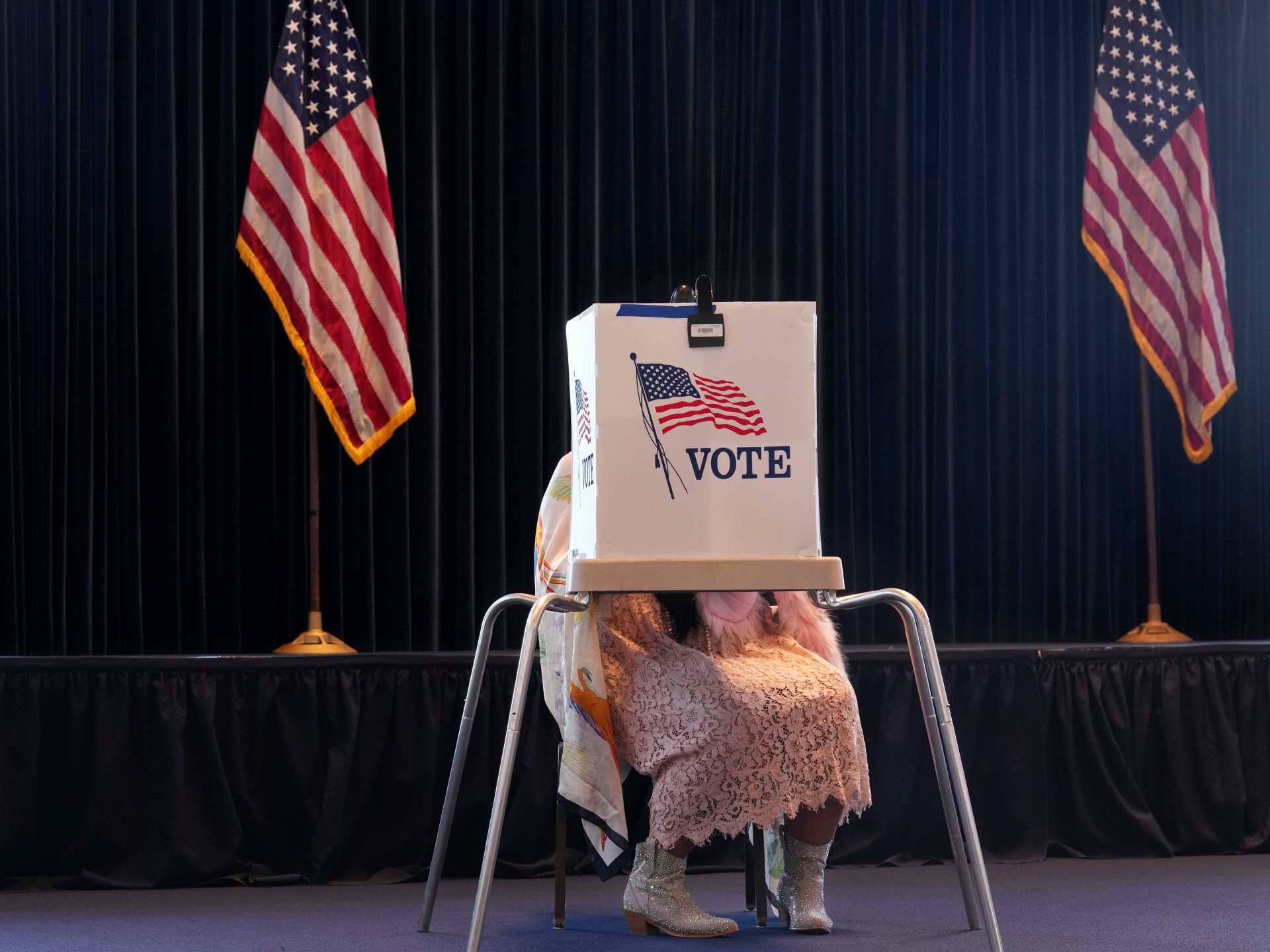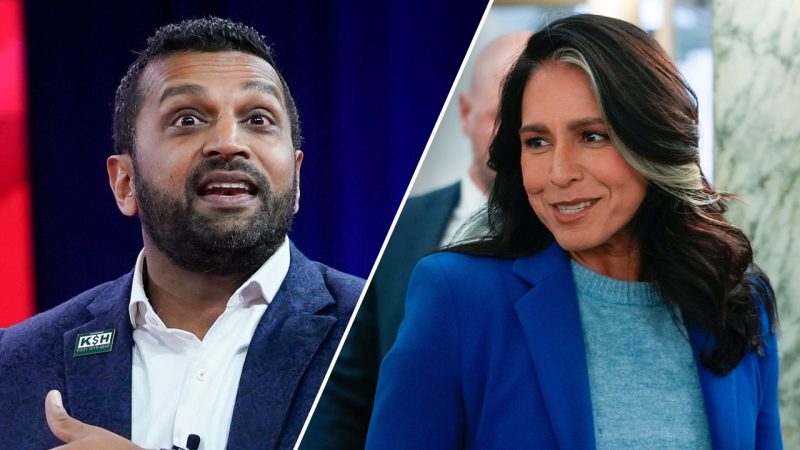What did 2024 tell us about US voters? | US Election 2024 News

The year may be coming to an end, but the extraordinary political events of the United States election season will cast a long shadow into 2025 and beyond.
There were many historic moments: from President-elect Donald Trump’s unprecedented conviction in his New York hush-money trial, to President Joe Biden’s surprise – and very much delayed – exit from the race, to two assassination attempts against the soon-to-be president-elect.
And, of course, there was Trump’s victory in the November presidential election – a return to the very top for a man who many thought was finished politically when he lost the 2020 election, and refused to accept the result.
With the dust settling on Trump’s victory over Vice President Kamala Harris, several trends have emerged over what does and does not motivate voters in one of the most influential countries in the world.
A commanding victory?
Trump did sweep the battleground states, making for an Electoral College map on election night that was strikingly red.
He took 312 Electoral votes, compared with Harris’s 226, and for the first time in his political career, won the national popular vote, improving on his 2020 results with several key demographics as well as in northern urban areas long considered Democrat territory.
But with the final results of the vote submitted on December 11, the “unprecedented and powerful mandate” Trump claimed on election night has proven to be a more subdued shift.
In the final count, Trump failed to win the support of a majority of US voters, taking 49.9 percent to Harris’s 48.4. That is one of the tightest margins of victory since 1968, second only to the razor-thin margin of George W Bush vs Al Gore in 2020.
It is far from the 8.5 percent margin of victory President Bill Clinton won in 1996, and further still from the 18.2 percent margin Ronald Reagan commanded in 1984, Seth Masket, the director of the Center on American Politics at the University of Denver, pointed out.
“This is still the era of polarisation,” said Masket, the author of Learning from Loss: The Democrats 2016-2020.
He predicted less of a large-scale realignment in the years to come and more of the entrenched partisanship – and incremental shifts – that have defined the US.
Masket further pointed to both parties’ attempts to highlight endorsements from across the aisle, notably Harris’s decision to campaign along with Republican hawk Liz Cheney.
“I think there was a time when that sort of thing might have mattered,” he said. “But I think that’s in the past.”
Pocket book over ‘democracy’?
Trump’s victory may not quite have been resounding but it has been illustrative, revealing a high tolerance among voters for both Trump’s criminal record and his record of seeking to undermine US democracy.
It was already well known that Trump’s four criminal indictments – and one conviction – had helped to stir up his base. This was widely expected, given Trump’s proven resilience within the Republican Party and his years-long brand-building as the victim of a political “witch-hunt”.
Trump’s efforts to overturn the 2020 election result, an extraordinary campaign that cut to the very core of US democracy, also did not make him a political pariah. In the months and years after his supporters stormed the seat of the US legislature, the Republican Party instead coalesced around Trump’s unfounded claims that the vote had been marred by fraud.
So, why did the Democrats’ message not connect?
“One possibility is that arguments about the threat to democracy are a little bit too abstract or esoteric to make sense to people,” said Jennifer Victor, an associate professor of political science at George Mason University’s Schar School of Policy and Government.
“Another way to read this is that there are just a lot of Americans who aren’t as interested in democracy any more, or are very attracted to… at least the rhetoric that goes along with more anti-democratic forms of government,” she said.
Then there is voter perception of the economy, an issue that exit polls consistently showed outpaced concerns over immigration, abortion, and indeed, democracy.
While voters grappled with the high cost of living in the US, macro indicators like job creation and earning growth have generally shown a relatively robust post-COVID recovery. The difference between individual experience and perception and those larger trends will inform the political years ahead, Victor said.
“The difference between what the macro indicators tell us and what people’s perception of the economy is, is really one of the big stories this year,” Victor said.
“The narrative that particularly Trump was putting out there about the US being in such bad shape is one that a lot of people seemed to internalise, even if it didn’t meet with some of the regular indicators that we would use to evaluate that,” she added.
Do US voters care about abortion?
Yes, but not necessarily in the way the Harris’s campaign – and Democrats in general – were hoping.
Like the protection of democracy, abortion rights had been a defining platform in Harris’s bid for the White House. Federal abortion protections were rolled back during Trump’s first term by a Supreme Court dominated by his appointees.
Harris had repeatedly warned that Trump, if elected, would work with Republicans to pass a federal abortion ban. Trump had softened from his previous support for such a ban in the final stretch of the election, saying the decision should instead be left up to state governments, although his statements have done little to allay concerns.
There was a gender gap in the presidential election: Harris won 53 percent of women voters compared with Trump’s 46 percent. But it was still far from the surge of women voters her campaign had hoped for.
Perhaps more frustratingly for Democrats, voters in three states – Arizona, Missouri and Montana – supported enshrining abortion in their state constitutions, while simultaneously voting for Trump.
“I think some of this is probably due to bullet voting – individuals who only voted in the presidential contest, but not on other ballot issues/contests,” said Kelly Dittmar, the director of research at the Center for American Women and Politics at Rutgers University–Camden.
“But also, there might have been some voters who felt that preserving access to abortion through direct initiative was enough for them to feel ok about casting a ballot for Trump due to alignment or expectations on other issues, like the economy,” she said.
“The bet that at least some Democrats were making on abortion being a key galvaniser of votes didn’t appear to pan out, as reflected in lower turnout data,” she said.
Did US policy towards Israel’s war in Gaza matter?
The Democratic Party has faced a reckoning over the Biden administration’s unconditional support for Israel amid the war in Gaza. This became particularly clear as hundreds of thousands of voters cast “uncommitted” ballots in protest of Biden’s policy during the primary season.
To be sure, Arab and Muslim voters were among several demographics that shifted away from the Democratic presidential candidate this year when compared with 2020. Most starkly, in the city of Dearborn, Michigan, the largest Arab-majority city in the US, Harris won just 36 percent of the vote, down from the 69 percent Biden won in 2020.
Polls have repeatedly shown that the majority of Democrats support conditioning aid to Israel, but Harris hewed close to Biden’s policy when she entered the race.
James Zogby, the director of the Arab American Institute, warned against discounting how impactful that decision was. It was likely a factor that contributed to the lower-than-expected support Harris saw from young people, he said, among other groups.
“There’s no question that it had an impact. We see it in the polls, and we saw it in turnout,” Zogby told Al Jazeera. “What we saw was that there were groups that were affected by this war, by the Biden administration’s failure to act in a decisive way to deal with the humanitarian crisis and the genocide that was unfolding.”
“The net impact of that was a loss of votes among several component groups: Arabs, obviously, but also young people and Black and Asian voters,” he said.
“What it translated to was people staying home, people just saying it didn’t matter, people voting for down-ballot candidates but not voting for president,” he said.
Racial realignment?
Finally, the 2024 election saw Democrats continue to lose ground with white working-class voters – while increasing support from college-educated whites.
But the shift in support for Trump among Latino and Black voters, particularly men under the age of 45, has prompted the most analysis.
About three in 10 Black men under 45 voted for Trump – about double the share he got in 2020. Latino men in the age bracket broke about evenly for Trump and Harris, solidifying a years-long trend away from the Democrats.
Some analysts have pointed to the results as evidence that the racial coalition that has long been seen as the backbone of the Democratic Party is no more. Others have noted that the shift could have implications for federal laws meant to protect minority voting rights, as those laws are generally predicated on the notion that certain groups broadly vote in unison.
However, William Frey, a demographer at the Brookings Institution, warned against being too enthusiastic with any predictions of a wider party realignment. While significant, these shifts are still relatively gradual, and could be a temporary phenomenon related to global trends.
“This could be a ‘blip’ election trend toward Republicans for Black and Hispanic voters, who still mostly favoured Democrats,” Frey told Al Jazeera.
“It’s up to Trump to make this minority shift more permanent.”





